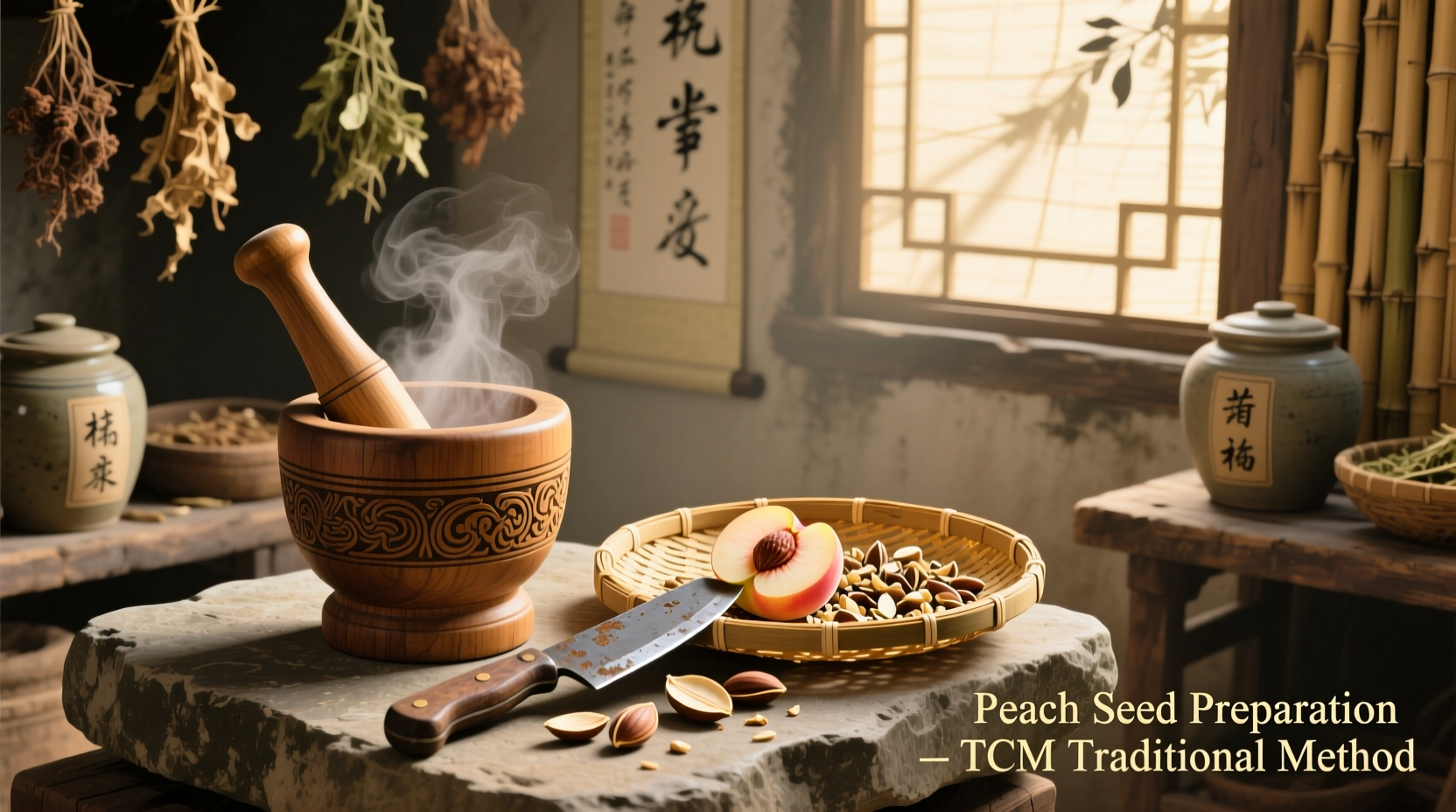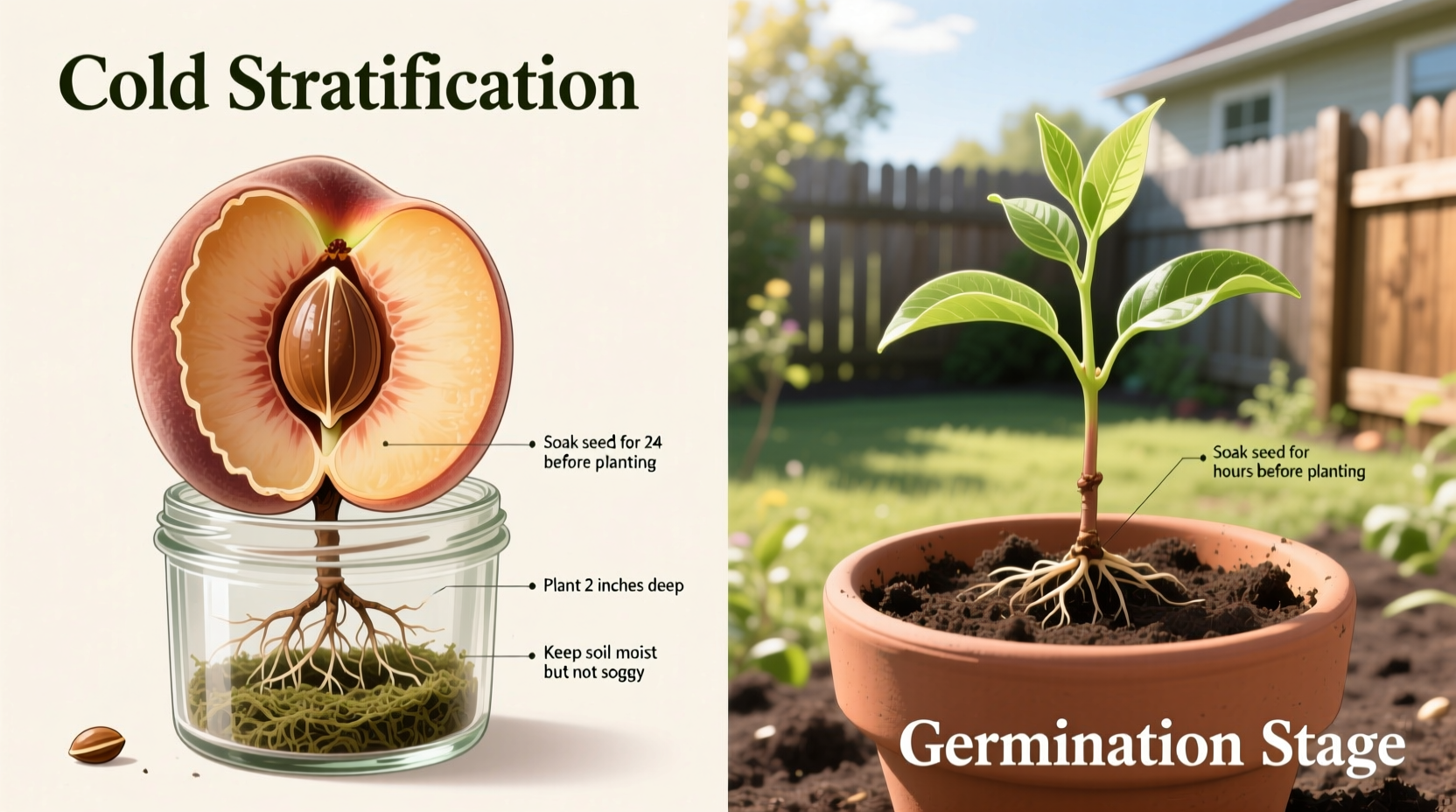Why Grow Peach Trees from Seed Instead of Buying Grafted Trees?
While purchasing a grafted peach tree guarantees fruit identical to the parent variety, growing from seed offers unique benefits for patient gardeners. You'll save money (seeds cost nothing versus $25-$50 for grafted trees), enjoy the satisfaction of nurturing a tree from its earliest stage, and potentially discover new flavor variations. However, be aware that seed-grown trees take longer to produce fruit and may yield different quality than the original peach.
Your Step-by-Step Journey to Growing a Peach Tree
Step 1: Selecting and Preparing the Perfect Seed
Start with a fresh, ripe peach from a variety known to grow well in your climate zone. Local farmer's market peaches often work best as they're adapted to your region. Remove the pit carefully without cracking it, then clean off all fruit residue with a soft brush under running water. Allow the pit to air dry for 2-3 days in a cool, shaded location before proceeding to stratification.

Step 2: Cold Stratification - The Critical Winter Simulation
Peach seeds require 600-900 chilling hours below 45°F (7°C) to break dormancy. This mimics natural winter conditions. Wrap the cleaned, dry pit in slightly damp paper towel, place in a labeled plastic bag, and store in your refrigerator's vegetable crisper. Check weekly for mold and maintain slight moisture. The University of California Cooperative Extension confirms this cold treatment is non-negotiable for successful germination.
| Climate Zone | Required Chilling Hours | Stratification Duration |
|---|---|---|
| USDA Zones 5-6 | 800-1000 hours | 12-14 weeks |
| USDA Zones 7-8 | 600-800 hours | 10-12 weeks |
| USDA Zones 9-10 | Less than 600 hours | 8-10 weeks (may need artificial chilling) |
Step 3: Planting Your Stratified Seed
After the chilling period, check for cracks in the pit indicating germination has begun. Plant seeds 3-4 inches deep in well-draining potting mix with the pointed end down. Use containers with drainage holes to prevent waterlogging. Maintain consistent moisture (not soggy) and place in a warm location (70-85°F/21-29°C). Germination typically occurs within 2-8 weeks after planting.
Step 4: Nurturing Your Seedling Through First Season
Once your seedling emerges, provide at least 6 hours of direct sunlight daily. Water when the top inch of soil feels dry. Fertilize monthly with balanced 10-10-10 formula at half strength. When roots fill the container or outdoor temperatures consistently stay above 50°F (10°C), transplant to a permanent location with full sun exposure and well-drained soil. Space trees 15-20 feet apart for proper air circulation.
Step 5: Long-Term Care for Healthy Growth
Prune your young tree during dormant season to establish strong structure. Remove vertical shoots and maintain an open center shape. Apply 2-3 inches of organic mulch around the base (keeping 6 inches from trunk) to conserve moisture. Monitor for common pests like peach tree borers and treat organically when possible. The USDA Agricultural Research Service notes that proper pruning during the first three years significantly impacts future fruit production.
Realistic Timeline for Your Seed-Grown Peach Tree
Understanding the growth timeline helps set proper expectations. Unlike grafted trees that may fruit in 2-3 years, seed-grown trees follow this progression:
- Year 1: Focus on root development; expect 1-3 feet of growth
- Year 2: Establish framework branches; may produce first flowers (remove these)
- Year 3: Potential for first small crop (thin to 1 fruit per 6-8 inches of branch)
- Year 4-5: Full production with proper care
When Seed-Growing Isn't Your Best Option
While rewarding, growing from seed has limitations. In USDA zones below 5 or above 9, winter chill requirements may not be met naturally. Commercial growers prefer grafting because it ensures fruit quality and reduces time to harvest. The American Horticultural Society reports that only about 30% of seed-grown peach trees produce fruit comparable to commercial varieties. If you're in a marginal climate or want specific fruit characteristics, consider purchasing a grafted tree of a recommended variety for your region.
Maximizing Your Success Rate
Start multiple seeds (5-10) to increase your chances of success. Keep detailed records of each seed's origin and treatment. Use a soil thermometer to monitor root zone temperatures during critical growth periods. During extreme weather, provide temporary protection with frost cloth or shade cloth as needed. Remember that peach trees need 600-900 chilling hours but cannot tolerate temperatures below -15°F (-26°C) once growth begins.
Frequently Asked Questions
Will my seed-grown peach tree produce fruit identical to the parent?
Generally no. Peach trees don't grow true to seed due to genetic variation. Your tree may produce fruit with different size, flavor, or ripening time than the original peach.
How long does it take for a peach seed to sprout after planting?
Typically 2-8 weeks after proper stratification, depending on temperature and seed viability. Warmer soil temperatures (75-85°F) speed up the process.
Can I grow a peach tree from seed in a container long-term?
Yes, but with limitations. Container-grown peach trees require dwarfing rootstock for best results. Standard seed-grown trees will eventually outgrow containers and need transplanting to the ground for proper development.
What's the biggest mistake beginners make when growing peach trees from seed?
Skipping or shortening the cold stratification period. Without sufficient chilling hours, germination rates drop dramatically. Another common error is overwatering during the early seedling stage.











 浙公网安备
33010002000092号
浙公网安备
33010002000092号 浙B2-20120091-4
浙B2-20120091-4